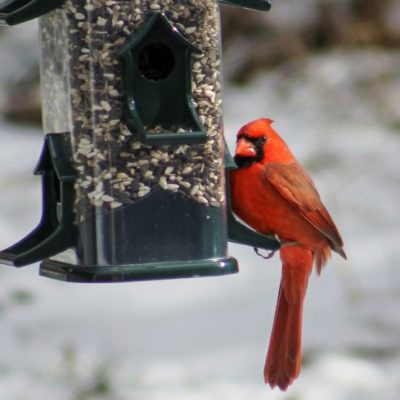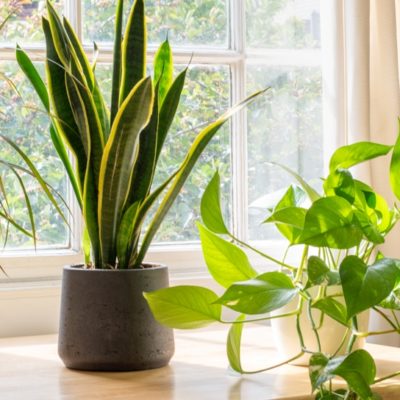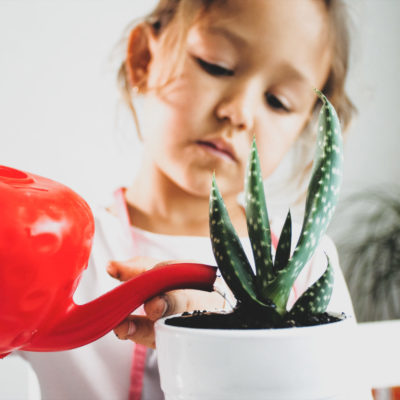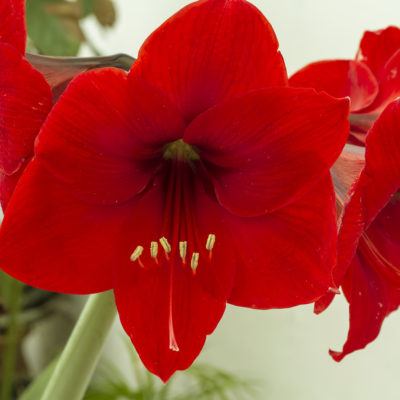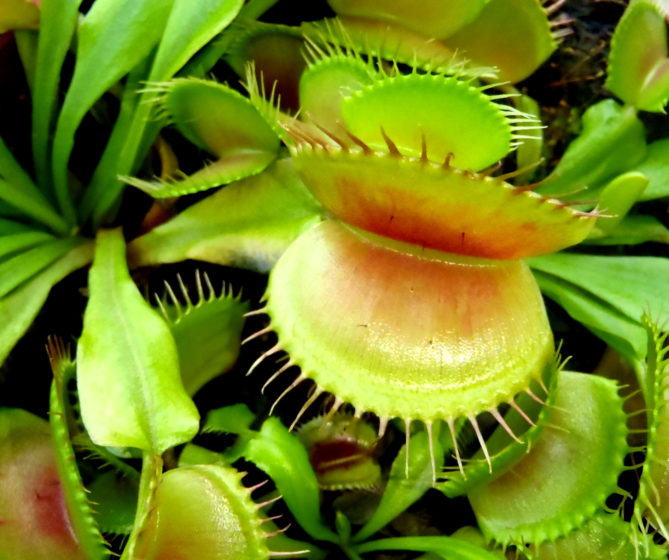
Tropical Plant Profile: Carnivorous Plants
Did you know that Belgian Nursery has insect-eating plants? The Orchid & Bonsai greenhouse (Greenhouse #2) carries insectivore houseplants throughout the year, though availability can vary depending on suppliers. Venus Fly Traps are the most common variety, available in small pots with clear terrarium-like covers to help keep in the humidity. A shipment of Pitcher Plants may arrive on occasion, typically in hanging baskets with their unique vase-shaped traps dangling below the basket’s edges. Both varieties make amazing additions to any plant collection; keep reading to learn how to keep them happy and thriving in your home!
In the typical home environment, carnivorous plants do not need to feed on insects to survive; photosynthesis (energy from sunlight) along with regular watering and fertilizing are enough to keep them happy. Their natural habitats, however, are marshy or damp areas with very poor soil, so ingesting nutrients from other sources (like insects) is vital for their dietary needs.
Venus Fly Trap Care & Tips
(Dionaea muscipula)
Light: Medium Light, bright sunny south- or west-facing window.
Water: Keep evenly moist but not wet. Do not allow to sit in water or dry out completely.
Humidity: High levels preferred; daily misting is recommended.
Fertilizer: Feed an all-purpose fertilizer at half-strength once a month.
What an amazing novelty plant! Their unique “hinged” leaves are edged with spiny teeth to add to their spooky image. And their amazing hunting skills rely on what is inside those creepy mouths! The lobes are lined with bright red and the colour–along with a sweet, sticky mucus–is perfect for enticing their prey. Each lobe has just 3 hairs (6 hairs in total) which are incredibly sensitive to touch. The jaws snap shut when at least 2 of these trigger hairs are touched within 20 seconds – yes, they are that precise and they can even distinguish between a potential meal and a raindrop! Once the jaws have enclosed on their prey, Venus fly traps secrete a red digestive fluid to break down the insect and absorb its nutrients into the plant’s system. After about 10 days of digesting, the jaws open back up to wait for the next meal.
Remember, this diet of snacking on waylaid bugs works very well for Venus fly traps in the wild. In your home, however, you don’t need to feed them flies or any other meat for them to thrive. Regular watering, daily misting, and feeding a half-strength fertilizer every month will keep them happy and healthy. Try keeping them in a closed or semi-closed terrarium to keep the humidity levels high – a clean mason jar is a great option! They also make great novelty plants for kids!
Pitcher Plant Care & Tips
(Nepenthes sanguinea)
Light: Medium Light, bright sunny south- or west-facing window.
Water: Keep evenly moist but not wet. Do not allow to sit in water or dry out completely.
Humidity: High levels preferred; daily misting is recommended.
Fertilizer: Feed an all-purpose fertilizer at half-strength once a month.
Pitcher plants are one of the more unique tropical houseplants we receive from our suppliers. Their common name is self-explanatory, as their pitcher-shaped leaves dangle over the edges of pots and hanging baskets. Those leaves work as “passive pitfall traps” which means the plant doesn’t really do anything to catch its prey. The inside of the leaves is lined with downward-facing hairs and the sides are super slick to prevent insects from climbing back out, and the bottom is filled with an enzyme-rich liquid that slowly digests the meal. There’s even a flat leaf that lays on top of the whole pitcher as a lid, to help keep out rainwater and to further discourage escape.
Pitcher plants are slow growing and have very similar care instructions to Venus fly traps; they also do not need to digest insects or other protein to survive in the typical home. Regular watering, daily misting, and feeding a half-strength fertilizer every month will keep them happy. They can be very sensitive to additives in water, so for best results use distilled water or even rainwater for both watering and misting your pitcher plants. You can also keep them on a pebble tray for extra humidity, or place bowls of water below their dangling pitchers to catch any extra evaporation.
Fun Facts about Carnivorous Plants!
– There are over 600 known species of carnivorous plants with far-ranging habitats, characteristics, and food preferences.
– Carnivorous plants have flowers! They send up tall flower stalks, often far away from their sticky mouths/pitchers, so that pollinators do not fall into their traps before finishing the job!
– Venus fly traps are part of the Sundew family and are native to mossy areas of North and South Carolina, where they can live up to 20 years! They are a protected species, and much like the Ontario trillium it is illegal to remove them from the wild.
– Some varieties of pitcher plants are epiphytes and grow on trees or rocks, while others survive in very acidic soil.
– One of the largest pitcher plants in the world is the Attenborough’s pitcher plant (Nepenthes attenboroughii) which can reach nearly 5 feet tall and can digest small animals! It is also on the critically endangered species list.
Note: Availability of carnivorous plants varies throughout the year according to our suppliers. Other varieties of carnivorous plants, like sundews, butterworts, and bladderworts, are not available.


